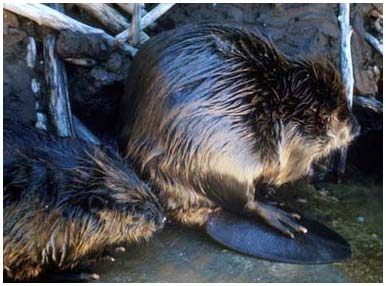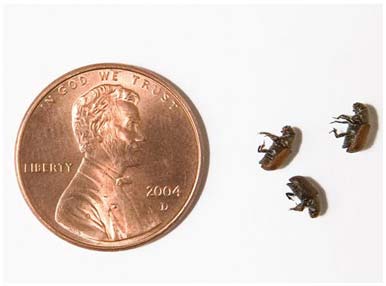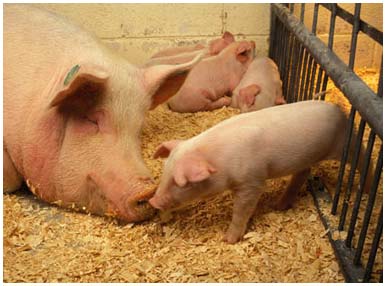10 most harmful creatures
They damage crops, pollute the environment, alter ecosystems. The sad thing is that people are also among these.
Beaver
Known as ecological engineers, beavers turn streams into ponds by cutting down trees to build houses and dams. Their dams slow down the flow, increase the temperature and cut down on oxygen. While this condition may be appropriate for some organisms, the ones that depend on the fast-flowing cool water will die gradually. These busy builders cost millions of dollars due to crop failure, loss of wood, destruction of streets and flora.

Beetle
Among hundreds of species of tree beetles, the most dangerous species chews both branches, branches, bark, stems and bushes. They like to attack trees that have been destroyed by drought and disease. A large number of trees were felled by the beetles in the southwestern United States and caused massive fires.

Pig
The pig itself is one of the cleanest species in the world, but pig farms are completely stinking. For example, a farm that produces 2.5 million pigs a year will produce waste equal to the city of Los Angeles. These pig wastes contain chemicals that have long-term effects on the growth and reproduction of fish and wildlife.

Termite
These insects feed on trees, roofs, cotton and even wooden houses and turn them all into dust. In order to access food and water, termites are also known to penetrate non-invasive things: cement, brick and plastic.

Sardines
The eel-like grouper uses a mouth like a cup to suck the blood and liquid of other fish, causing scarred or dead prey. In their 1-year adult life, a stonefish can destroy 18 kg of fish. The killer was responsible for a significant decline in fish populations in the Great Lakes in the 1950s and 1960s.

Zebra stripes
These big, finger-like organisms consume plants and animals that are very essential in the food network. At the same time, they block waterways and block drainage pipes, costing about $ 5 billion for repairs.

Ghost butterfly
This night butterfly has attacked North American forests since it was accidentally introduced in the 1860s. Butterflies feed on foliage of more than 300 species of trees, especially like oak and aspen. .

Goat
In most places where people lived, they brought goats that destroyed crops. Aggressive goats eat crops, attack other animals and increase soil erosion. In the Galapagos, goats defeat the slow turtles to gain food and shelter. Excessive grazing also causes desertification in Africa. In addition, Australian goats also destroy the heritage of Aboriginal people.

Elephants
The voraciousness of these giant creatures makes them wild. They knocked down trees, attacking farmers' crops. Elephants eat both their favorite fruits, leaves and bark. In order to protect crops, homes and families, farmers often have to guard elephants with chili and oil.

Human
Humans burn fossil fuels, cut down forests and change the whole world where living things are. We have significantly increased the amount of CO2 released into the atmosphere and warmed the planet to a temperature that caused disease to spread rapidly, increasingly storms and floods, melting ice, depleted natural resources. , and many plants and animals no longer exist. The consequences of climate change signal a gloomy future for the entire planet.

MT
According to Livescience, Vnexpress
- Discovering strange sea creatures suspected of being aliens in America
- 10 most terrifying sea creatures
- 4 fictional creatures, but doubt it is 100% real
- Pictures of sea creatures
- Detecting concussions about 20 species of strange creatures in Antarctica
- Discover many strange 'alien creatures' in the deep sea
- Discover hundreds of strange creatures in the seabed of the Philippines
- Finding monsters 'five-finger hands' like people in Antarctica?
- 'Alien creatures' Thailand beach horror
- Many giant snake creatures drifted to the coast
- Strange creatures can draw their faces at will
- Young creatures are not old
 Animal 'suffering' after hibernation
Animal 'suffering' after hibernation Why do goats climb well?
Why do goats climb well? Scientists were surprised to see chimpanzees eating turtles
Scientists were surprised to see chimpanzees eating turtles Giant catfish died deadly due to drought in Thailand
Giant catfish died deadly due to drought in Thailand